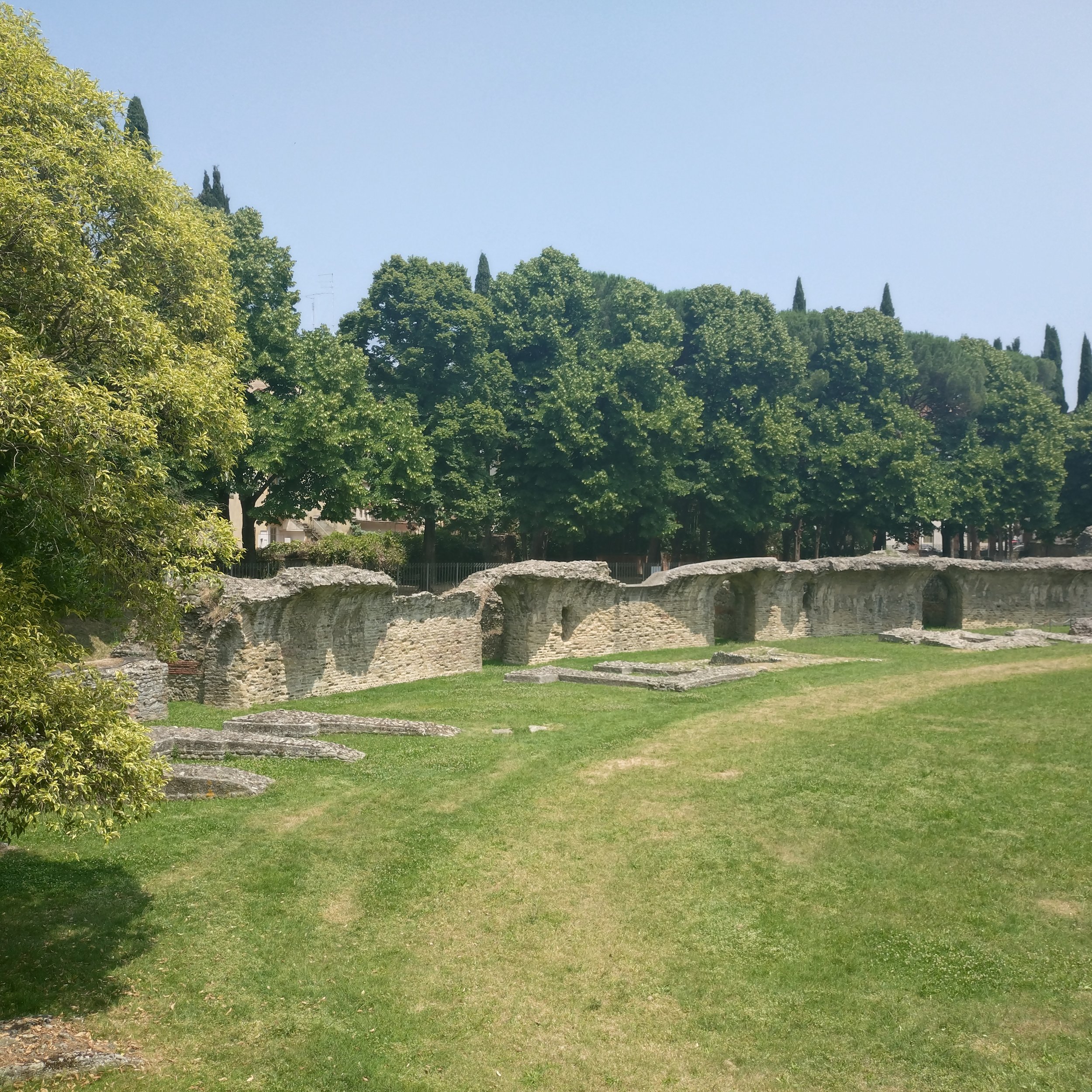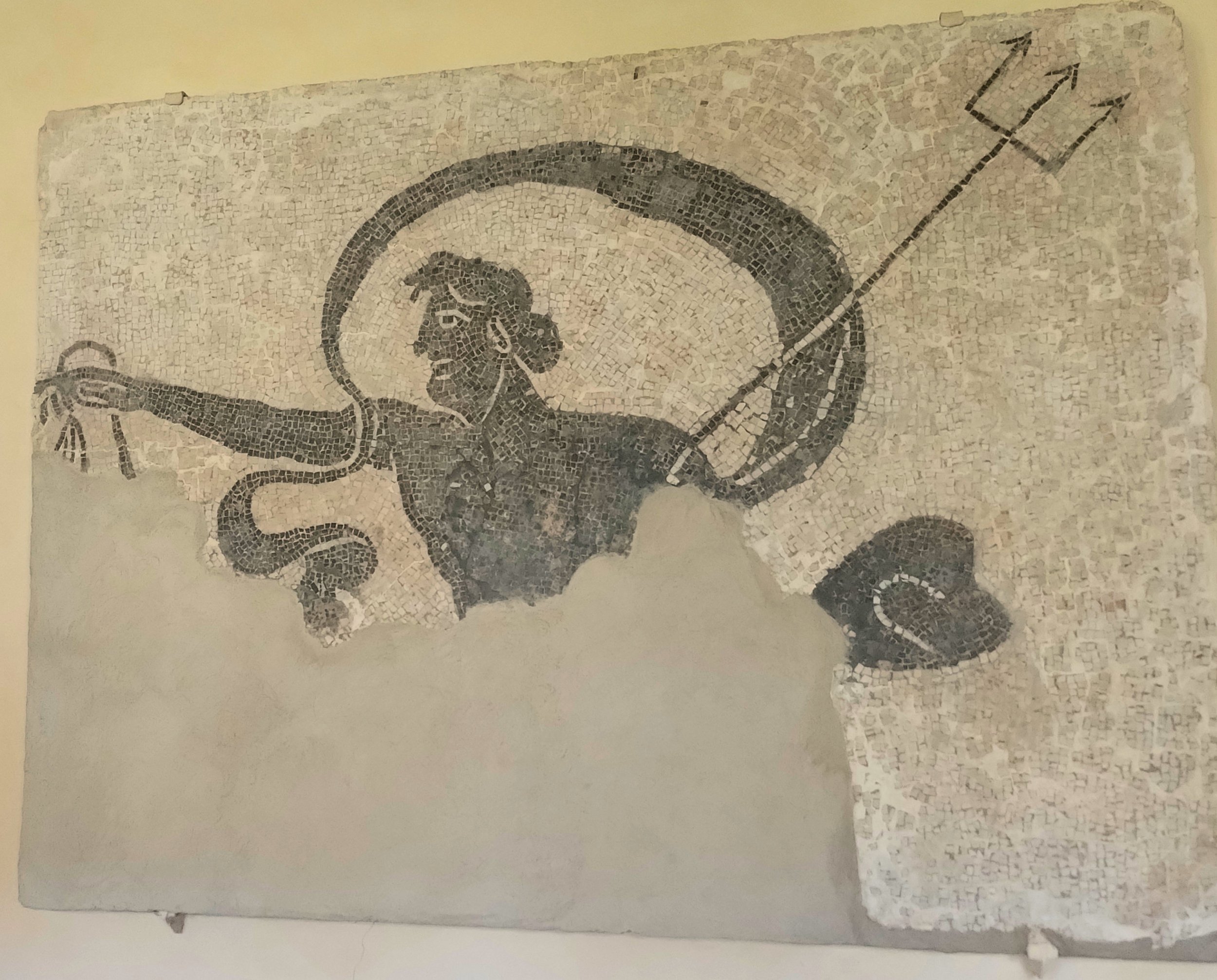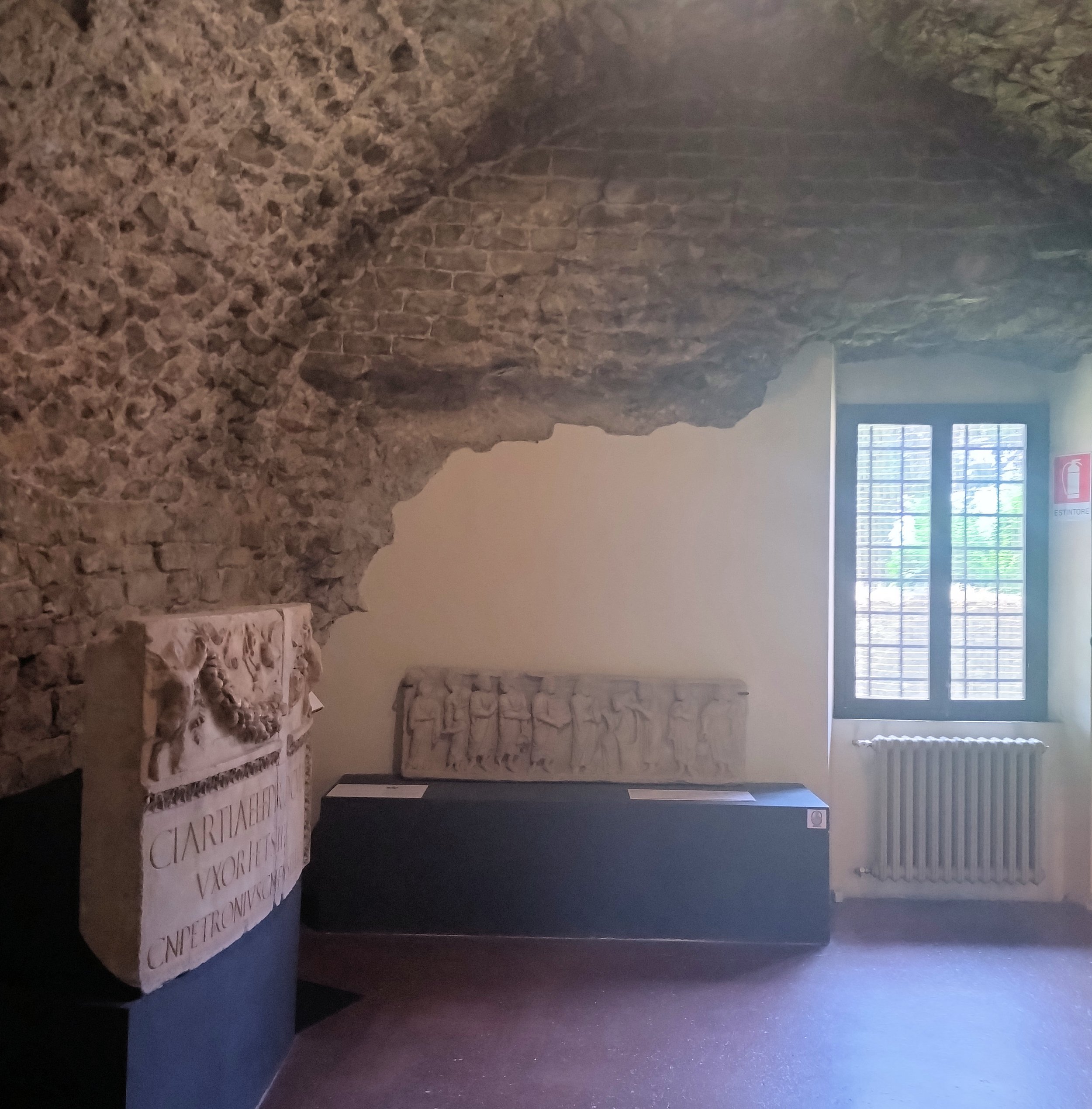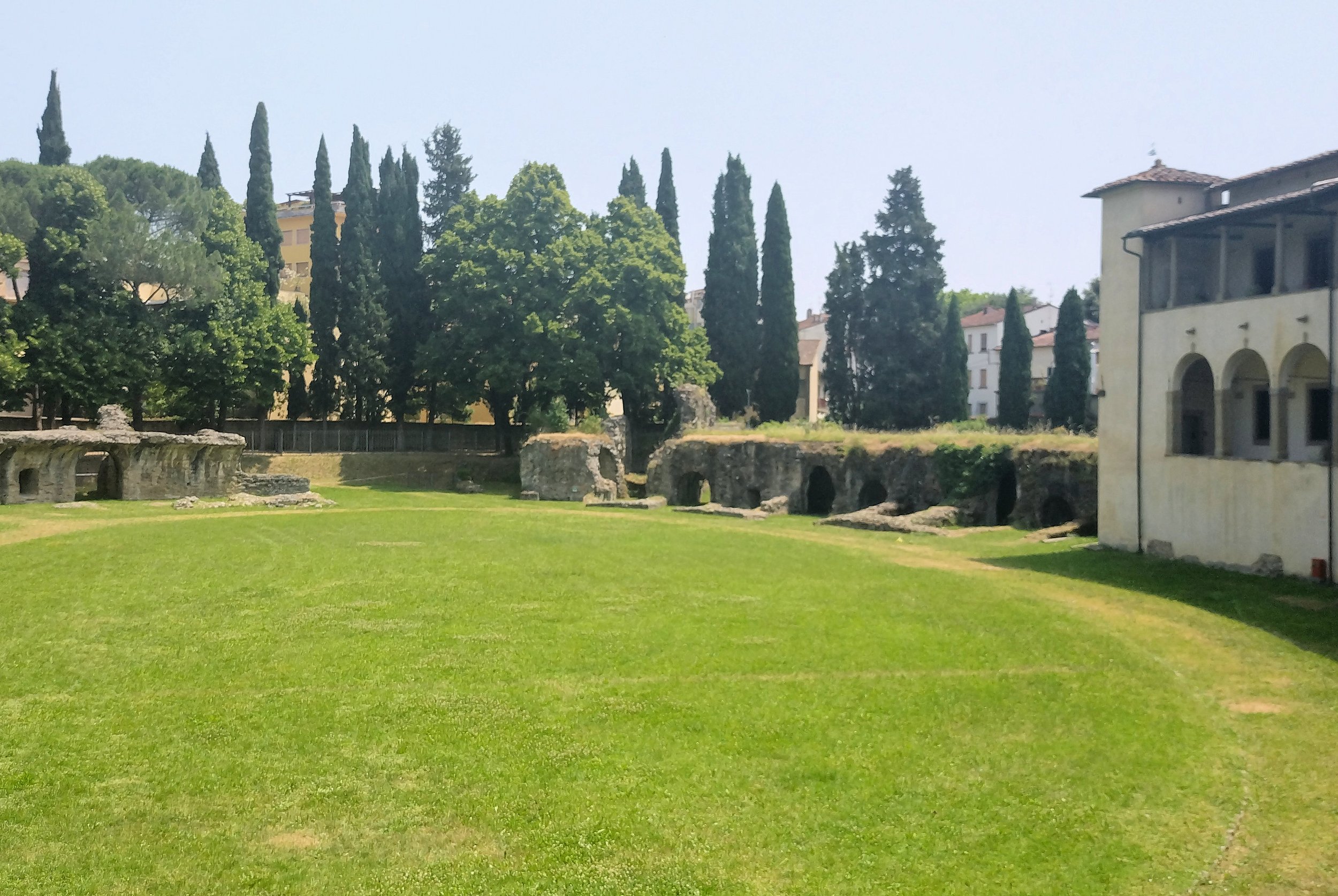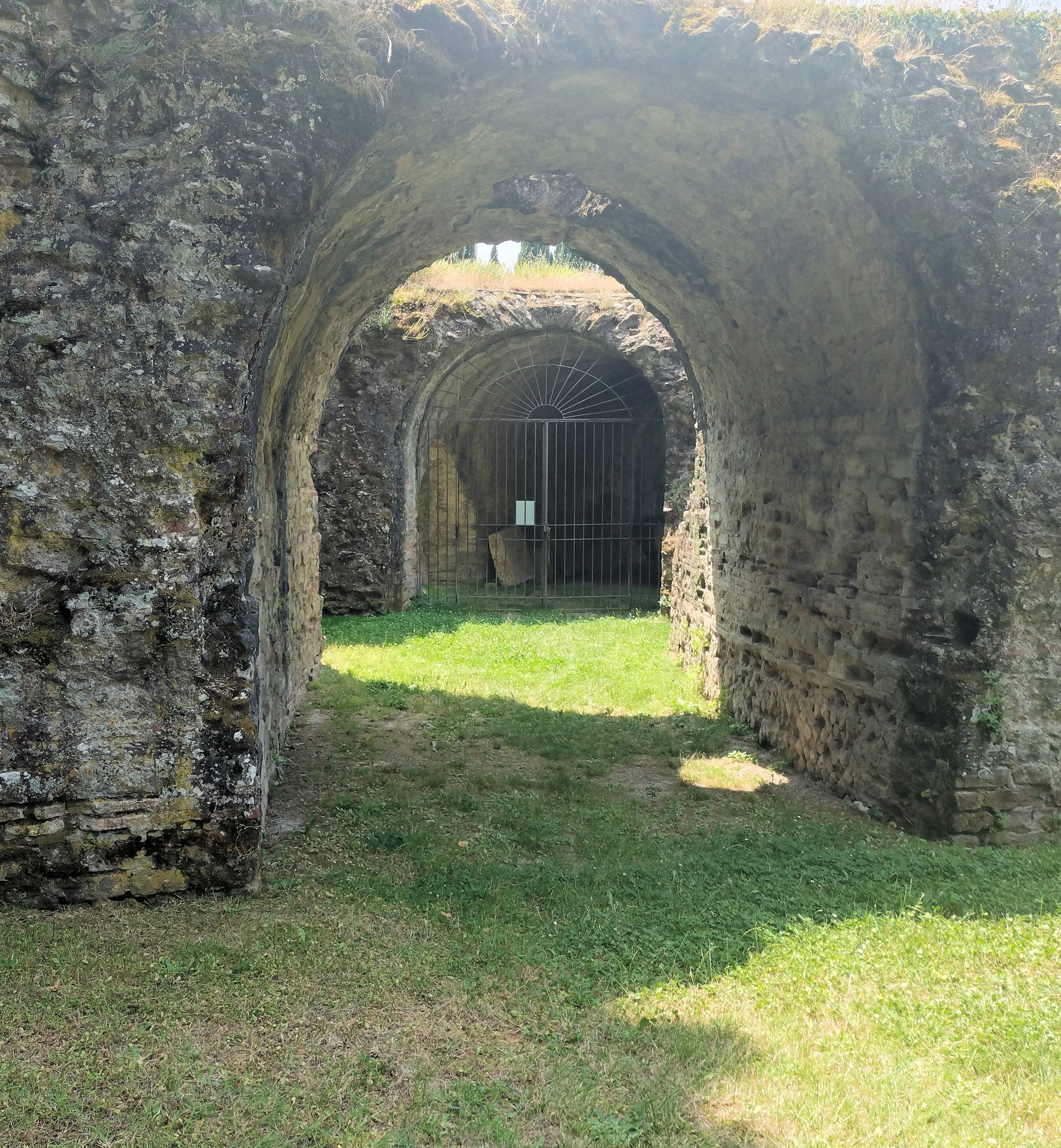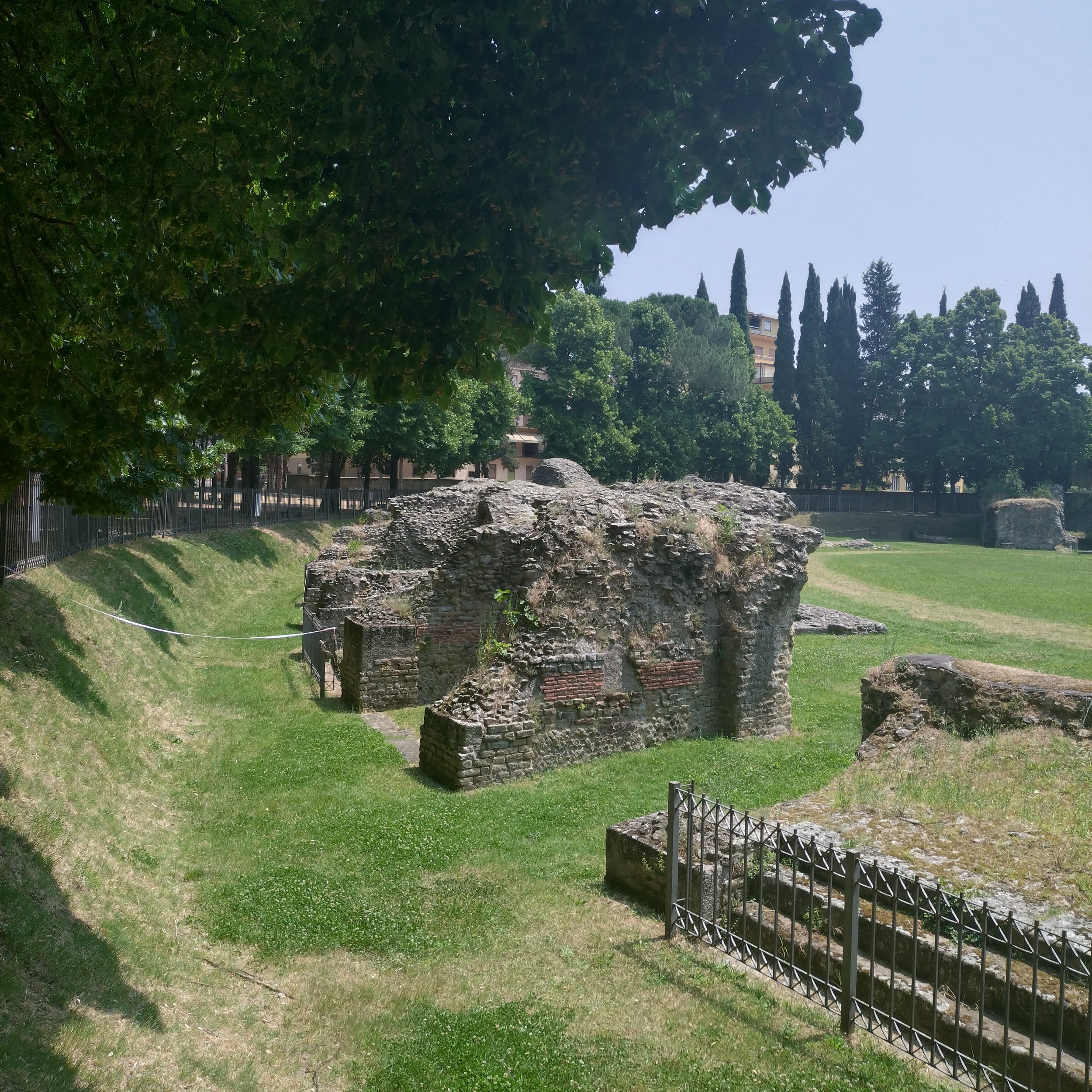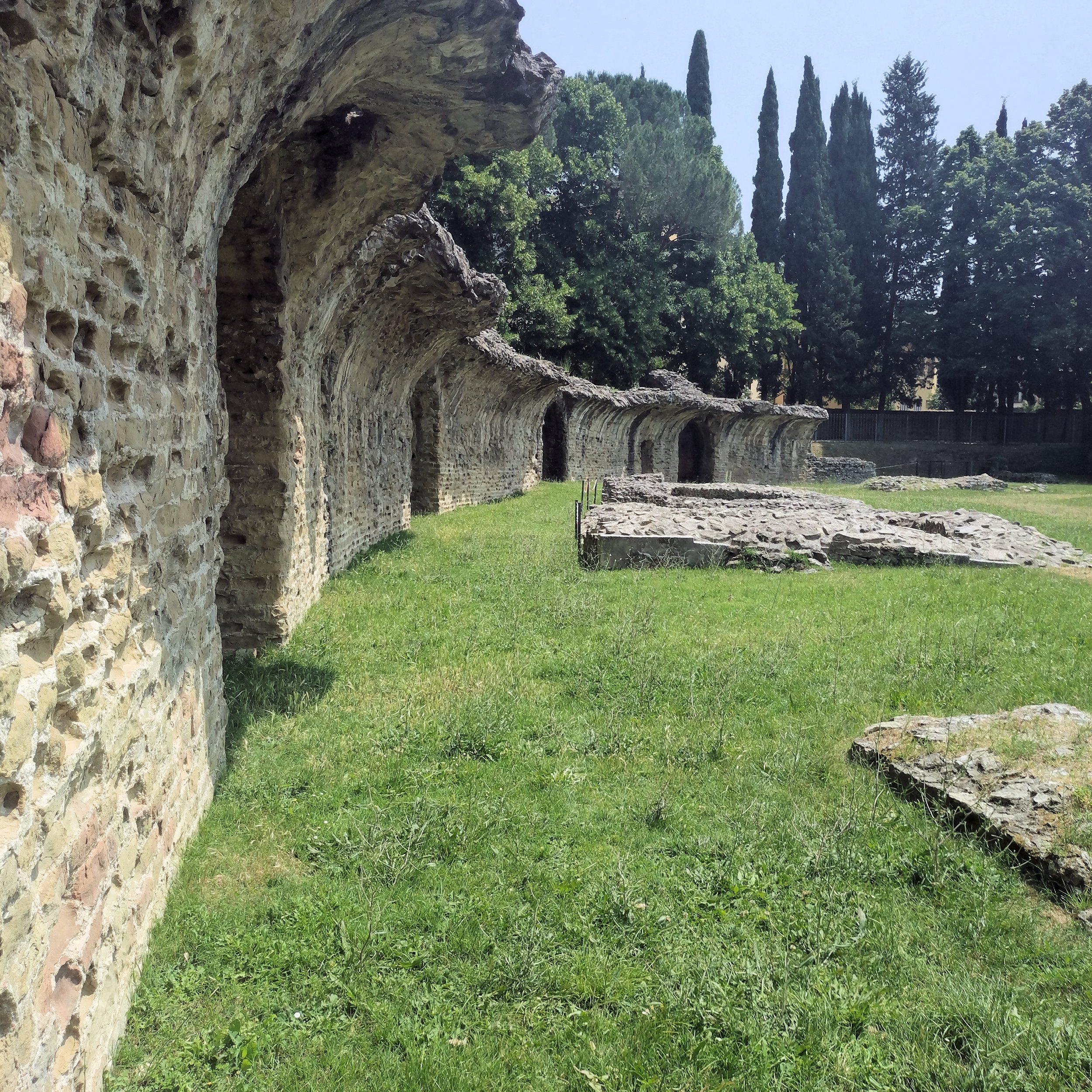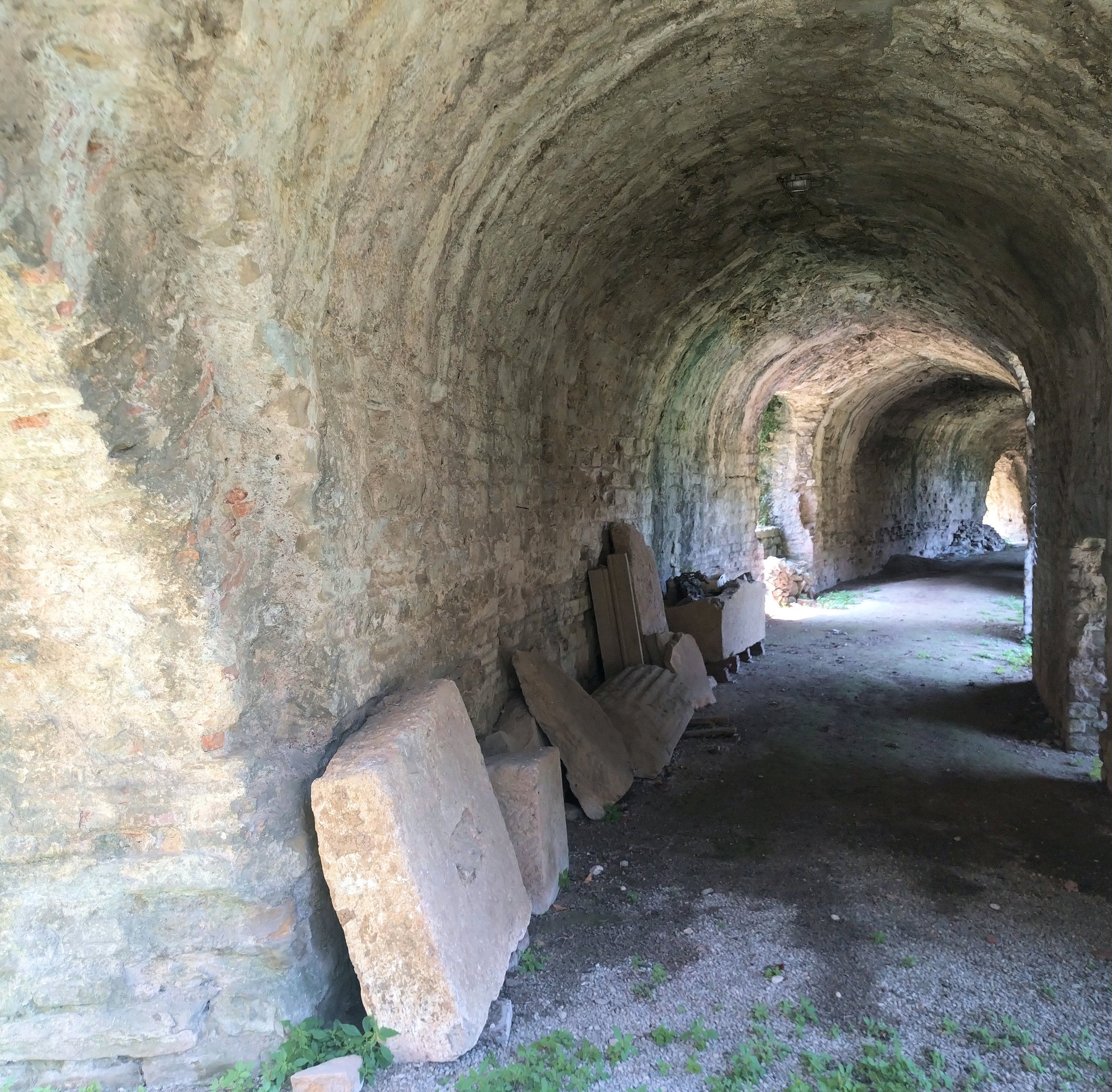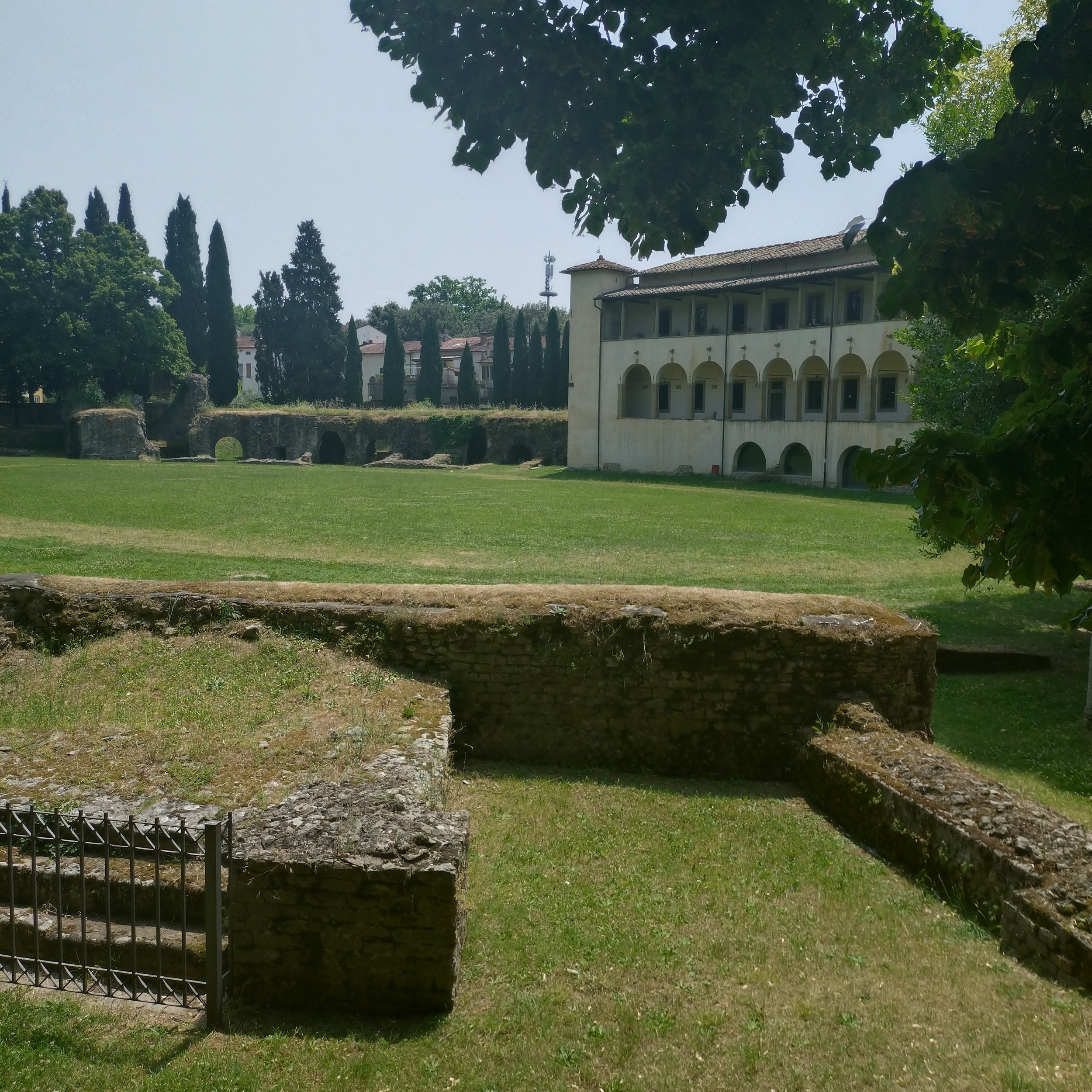XLIV Arezzo (Arretium)
What3words – stand.dogged.duty
Entrance - bucked.tropic.ports
Construction - 1st Century AD
Capacity - 8,000 - 12,000
Visited June 2025
Status – Extensively quarried. 16th Century monastery constructed on the south-western cavea is now the Archeaological museum and the entrance to the arena.
Etruscan towns of what is now Umbria and Tuscany lay in the path of the northward expansion of the Roman Empire and fell to hostile takeover and absorption. One such town became Arretium (Now Arezzo). Conquered in 311 BC, Arretium became a military station on the via Cassia, the road by which Rome expanded into the Po basin. In the reign of Hadrian (117-138 AD) an amphitheatre was built to the south of the town. Measuring 122x92 metres with an event floor of 72 x 42m it is estimated to have had room for between 8,000 and 13,000 people within a 22m high curtain wall.
There is little or no mention of it in ancient literature and it seems to have served as a quarry for the construction of churches and fortifications throughout the middle ages. The association between pagan worship and christian martyrdom resulted in numerous amphitheatre sites having later churches or monasteries constructed within and from their remains. Arezzo is no exception. The most intact section of the cavea in the south western quadrant was incorporated into the Monastery of San Bernardo in the 16th Century.
Understandably, the tourists who come to Arezzo tend to be more interested in the incredible 15th Century frescoes by Piero Della Francesco in the Basilica of San Francesco, than in the Roman amphitheatre. Nevertheless it is worth seeking out. Initially approaching from Via Francesco Crispi, a large marble slab in the pavement confirms your arrival at the Anfiteatro Romano. Don’t however be put off by the high, chained-shut, iron gates and the sign in Italian describing works in progress. Instead go round the corner into Via Margaritone where the former monastery has now become the museum of Archaeology. €6 is the price of admission (2025) which allows you to wander freely through the exhibit rooms, a number of which are formed from the vaults of the amphitheatre structure, and out into the open site. The outer walls and circulation corridor are gone, but much of the sub-structure and the inner corridor survives.

